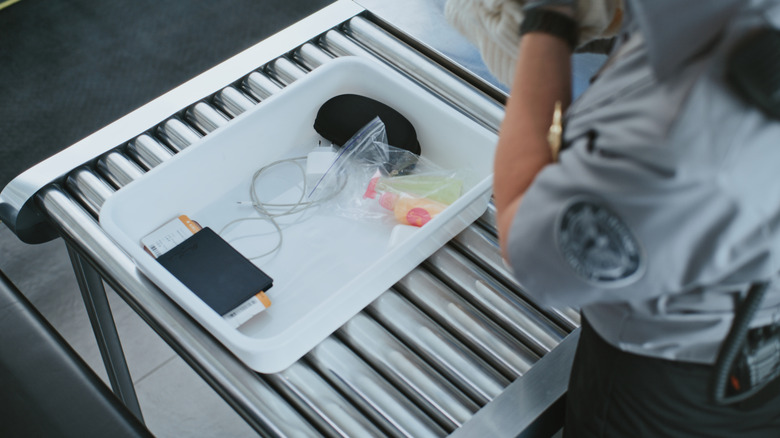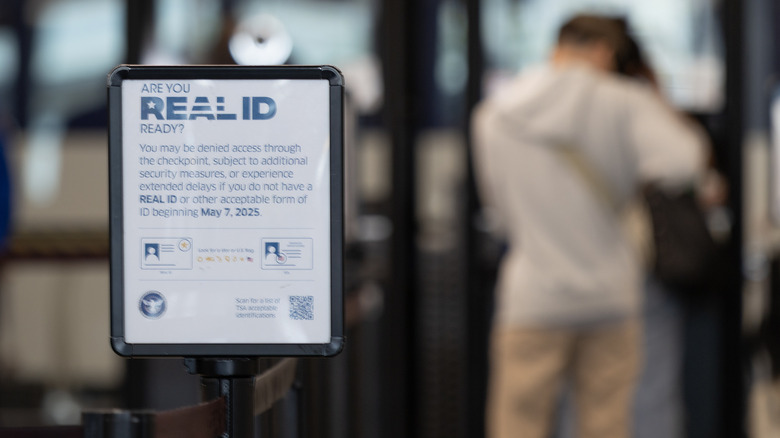TSA's Automated Screening Lanes Feel Like VIP Shortcuts Without Stress: Here's What To Know
For years, security checkpoints have been the most irritating (although necessary) part of flying — even if you're a seasoned traveler. But the Transportation Security Administration (TSA) is flipping the script by installing some new automated screening lanes that hopefully will mean less crowding and no awkward shuffling of bins while the passenger behind you is breathing down your neck. That should be welcome news to fliers of all stripes.
These automated screening lanes, or ASLs, are part of a wave of new TSA tech that's turning airport checkpoints into something more streamlined. They're also rolling out self-screening options, where passengers can scan their own documents rather than being checked individually by a TSA officer. The new system has so far been introduced at major airports in New York, Chicago, Los Angeles, and others. And yes, thankfully ASLs are even making surviving Atlanta's Hartsfield-Jackson airport, the busiest in the world, a little bit easier.
Automated screening simplifies TSA checkpoints
The idea behind these automated lanes is simple: let machines do the heavy lifting so people can move through faster. But in addition to speeding things up, TSA has introduced more advanced technology to make the screening process more efficient and accurate. For starters, the new lanes use high-tech computed tomography (CT) scanners to create super clear 3D images of what's in your carry-on bags. This should hopefully cut down on the need for additional airport screening where you have to wait while a gloved officer digs through your personal effects.
Then there's the design of the lanes themselves. Instead of everyone stacking up in an increasingly impatient line to load their bins, four travelers can load their items at once. Plus, the bins are even bigger, and they roll automatically on a conveyor belt into the scanner so you don't have to shove them along or wait for an officer to reset the line. If something questionable does pop up in your bag, it gets quietly diverted to a separate belt for further inspection — without holding up everyone behind you. Lastly, the empty bins are automatically fed back to the front, saving the extra time it takes for TSA staff to do it themselves.
The new system cuts down on awkward bottlenecks and grumbling passengers staring you down while you untangle a charger from your shoelaces. It's not quite the private jet experience, but it promises to be an upgrade from the typical chaotic lines we're used to. And when you're dragging a suitcase through a packed airport on two hours of sleep, that might be just what you need.
What travelers should know before heading to the airport
While airport tech is doing more work than ever, there are still a few ways to help things along and avoid being that fumbling person in line everyone stares at. You'll still need to separate out your electronics (anything bigger than a cell phone), and make sure you don't stack anything on top of them. Luckily, you should be able to fit everything since the bins are roomier now.
TSA still has its various carry-on luggage rules you should know before heading to the airport, such as putting liquids in a zip top bag (no more than 3.4 ounces) and leaving your weapons and sharp objects at home. If you need a refresher on what you can bring, the MyTSA app has a handy "What Can I Bring?" tool, and TSA also answers questions via text, Facebook Messenger, or X under @AskTSA.
If you or someone you're traveling with has a disability, medical condition, or just needs extra time to get through security, the TSA Cares program is helpful. With 72 hours' notice, they can provide a trained officer to assist you through the process. One more heads-up: REAL ID requirements are finally in place. All passengers in the U.S. now need a REAL ID-compliant driver's license or an alternative acceptable form of ID, like a passport, to board domestic flights. If you aren't sure if you've got one, you can check on the TSA website.


